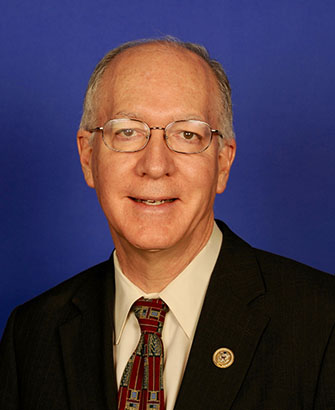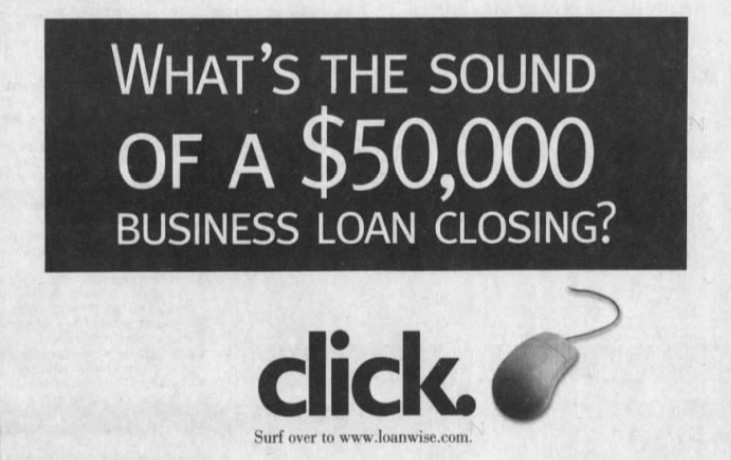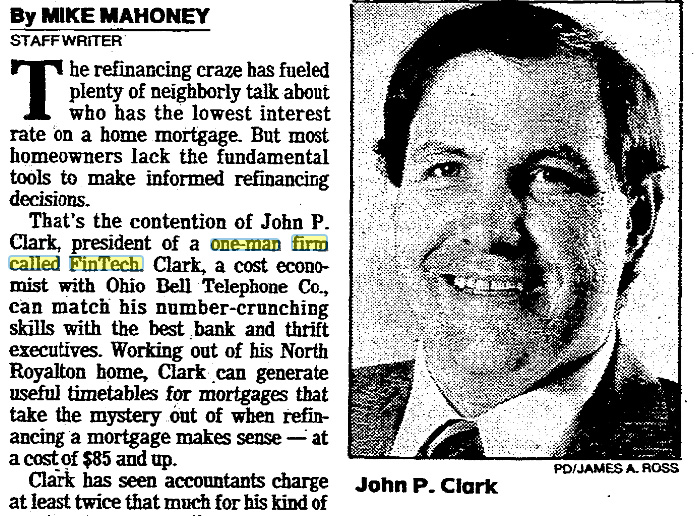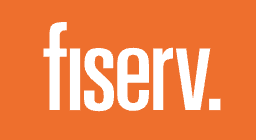Fintech
Pandemic-Induced Pivot Results in Innovative Lending Software
October 15, 2021 “What the hell are we going to do now?”
“What the hell are we going to do now?”
Kunal Bhasin, CEO of 1West, saw the light at the end of the tunnel for his business in March of 2020. Instead of closing his doors and pursuing other options in finance, Bhasin held strong and began developing a product that was merely an idea prior to his business’s abrupt halt.
“I made the decision at that point when everyone was running, I hired two full time engineers. I said hey, I’ve had this idea for a long time, the whole company has had this idea for a long time, we just never had the time to implement, and then all we had is time because we [weren’t] closing that many deals.”
The idea, a software called ABLE (Automated Business Lending Engine) is a platform that minimizes the lapsed time that occurs in the funding process. “There were deals all over the place in different people’s inboxes. And then those people would have to put those deals into our processors, which created huge gaps of time,” said Bhasin.
“We needed to centralize the deal flow. Whether the deal is coming from a partner, or the deal is coming from a customer, [we needed] a centralized place where a customer could land and start completing the process.”
With the help of his former college roommate, engineers, and staff, Bhasin put his idea to fruition— and ABLE took off. “We rolled up our sleeves and spent the better part of the last 16 months building it, and now the largest percentage of my time devoted to running 1West is on the software and the platform.”
Bhasin claims that his product gives his company a huge competitive advantage, as he is able to use AI to evaluate, process, and determine the type of funding and through which lender is best on an individual basis.
“[ABLE] really shrinks that entire gap time so when the lenders get in early morning, when the funders get in early morning, our stuff is always in queue, and it’s created really nice returns on the amount of customers we’re getting and the amount of deals we’re funding.”
The automation of the application process has allowed potential borrowers to not only find the ideal package for their needs, but allows them to apply for different types of capital streams, something that would take tons of manpower and time without the ABLE software.
“Greater than 90% of the customers who come into ABLE apply for more than one product,” said Bhasin.
When asked about if there were any plans to license the product in the future, Bhasin was hesitant to give a definite answer for the future of his creation. ABLE is already white labeled by 1West for brokers.
“Maybe,” he said, I want 1West to reap the benefits of it for 6-12 months and fix all the tweaks we have to make. We have a lot going on.”
Fintech Helps Small Businesses More Than Banks, says US Rep
October 14, 2021 At the Bipartisan Policy Center’s summit on small business recovery on Thursday, Rep. Bill Foster (D-IL) of the US House of representatives credited fintech for helping small businesses survive pandemic-influenced hardships. “I was very struck recently, if you look at the PPP program, some of the most effective providers were fintech. There is some evidence that says fintech providers were more effective than banks” said Foster.
At the Bipartisan Policy Center’s summit on small business recovery on Thursday, Rep. Bill Foster (D-IL) of the US House of representatives credited fintech for helping small businesses survive pandemic-influenced hardships. “I was very struck recently, if you look at the PPP program, some of the most effective providers were fintech. There is some evidence that says fintech providers were more effective than banks” said Foster.
Fintech beat the banks not only in the allocation and distribution of PPP money, but providing unprecedented help to small businesses owned by individuals from underserved communities, according to Foster. “I think that is something that we have to make sure that [the government] is doing everything we can to support the use of technology by small businesses.”
With quick access to capital, innovative ways to pull data and store information, flexible lending and repayment options, and a mass array of competition, non-bank finance alongside fintech allowed small businesses across America the chance to survive when the odds were stacked against them. Traditional banks, tied up by regulations and bureaucratic processes, would have never been able to provide the capital needed to the countless businesses who relied on PPP loans to stay alive.
Foster has used fintech’s performance as a way to make his case for the necessity of the industry’s role in the everyday life of all Americans. “We’re trying to do a better job in getting a secure digital ID in the hands of all Americans” he said. “Providing a guarantee for all Americans, regardless of what their financial situation is, that they will have access to at least a basic internet connection, basic broadband connection, and a low end [mobile] device.”
Foster spoke about his plan to bundle these ideas with a mindset of fraud prevention, using fintech to provide a digital suite of government issued documents in an effort to counter identity theft. With this, according to Foster, fintech can provide a system in which an individual can prove who they are online, subsequently preventing fraud.
“Small businesses are one of the real victims of identity fraud,” he said. Arizona, Louisiana, and Oklahoma have taken the lead in incorporating fintech into their efforts of fighting small business identity fraud in their states, Foster claimed. He also touched on fintech’s role in the collaboration of digital medical records between healthcare companies and individual practices to enhance the innovation of healthcare processes.
With the government acknowledging fintech’s future nationwide impact on a bipartisan level, the integration of this technology in small businesses and consumers alike at an unprecedented level is just a matter of time.
Plaid Report Hypes Fintech’s Progress, Potential
October 13, 2021 In their 2021 annual report, fintech giant Plaid claims that more people use fintech products than social media or streaming services in the U.S. Over the past two years, the number of Americans using fintech rose from 58% to 88% – a 52% increase.
In their 2021 annual report, fintech giant Plaid claims that more people use fintech products than social media or streaming services in the U.S. Over the past two years, the number of Americans using fintech rose from 58% to 88% – a 52% increase.
“In terms of consumer technology penetration, fintech has entered the stratosphere of video streaming subscriptions (78%), and social media (72%) and is nearing par with the internet (93%). We’ve reached an era in which financial technology is no longer a corner of the financial system, but approaching its center,” reads the report.
The pandemic is credited as the catalyst for the large consumer engagement, but the report claims that the numbers are here to stay. According to Plaid, consumers have discovered that fintech products save them time and money, boosts fiscal confidence, and helps them make better financial decisions.
The report also found that baby boomers were the fastest-growing sect of fintech users, with boomer consumers doubling fintech engagement over from last year to 79%.
Plaid claims that the access to money managing apps has allowed debtors to save money and pay off debt. The report found that 53% of people who attempted to save money used a budgeting app in 2021, and 56% of people who made a goal to save or invest in the same year used some type of fintech app.
“The Internet has not really come for financial services before, and now it has,” John Pitts, Plaid’s global head of policy, told Fortune. Pitts said the “astonishing” year-on-year increase in consumer use “means that fintech is now one of the most adopted technologies by U.S. consumers.”
The report also evaluated race’s impact on fintech use. “While the vast majority of Americans have bank accounts (95%), minority groups tend to lag behind in access,” the report reads. “Only 87.8% of Hispanic people are banked, but 95% of those we surveyed report using technology to manage their finances. Similarly, while 86% of Black households are banked, 81% of those we surveyed report using technology to manage their finances.”
The report mentions that African Americans use fintech more than white individuals to combat financial problems. They also found that white account holders care less about fees than any other races.
“While the concept of managing your finances digitally has reached mass adoption, none of the individual types of tools has gotten more than 70% adoption,” Pitts said. “For individual types of products and services, there’s still a huge amount of product-level growth left in the market.”
Facebook is Buying Invoices, But is it Factoring?
October 8, 2021 After Facebook announced Facebook Invoice Fastrack, a program that would allow the company to enter the invoice factoring business effective October 1st, few knew what to expect.
After Facebook announced Facebook Invoice Fastrack, a program that would allow the company to enter the invoice factoring business effective October 1st, few knew what to expect.
“My gut tells me here that Facebook is not all of the sudden getting into the lending business,” said James Cretella, Partner at Ottoburg LLC and guest speaker at the IFA conference last Spring. “Big tech is seeing the information symmetries, especially in small business lending. It’s very fragmented, and [tech] is trying to exploit that to bring down the cost, and to consolidate that industry,” he said.
Cretella expressed a positive outlook on Facebook’s entrance into the factoring sphere. “I think it’ll be a very good thing for small businesses when big tech gets involved.”
Others believe that big tech is doing pseudo-funding in an effort to break into the space and improve their public image. “There’s always a question when big tech or similar big anything’s get into factoring,” said Robert Zadek, Of Counsel for Buchalter and CEO of Lender’s Funding. “They might call that factoring, but it’s not. It’s a fake factoring product. Fake in the sense that it’s only part of what factoring is,” Zadek said.
Since then Facebook has revealed its program partners, Supplier Success and Crowdz.
The major component here is whether or not Facebook is doing the standard operating procedures of a factoring company, or just purchasing invoices owed. “They’re probably not filing a financing statement a UCC-1, because that takes a long time, and [tech] likes fast,” Zadek said. “Filing is slow and almost manual.”
Without going through the processes of a factoring company, Facebook may just be banking on the good faith of borrowers to pay and eating the costs of those who don’t. “[Facebook] is left with an earned 1% fee with no work, which would be profitable if they get back. If they don’t it’s like a write off,” said Zadek.
According to a Facebook announcement, the company has already practiced factoring with a handful of small businesses, claiming that the program has successfully helped these select businesses grow, even giving some businesses opportunities to just keep their doors open.
 We wanted to make a commitment to building tools that made information and inclusive funding partners easy to find and understand,” said Ronnie Cameron, Product Manager, Social Impact at Facebook. “We’ve been able to engage with some amazing [organizations]. The pandemic brought to light the gaps in access to funding that have always existed for underrepresented business owners.”
We wanted to make a commitment to building tools that made information and inclusive funding partners easy to find and understand,” said Ronnie Cameron, Product Manager, Social Impact at Facebook. “We’ve been able to engage with some amazing [organizations]. The pandemic brought to light the gaps in access to funding that have always existed for underrepresented business owners.”
Facebook is positioning itself in a way that appears that the company is providing an exclusive service to a community who had already been underserved prior to the pandemic, and now, according to them, needs help more than ever before. As the company has had a tough time maintaining a positive image to the public, this could also just be a slightly profitable way to fix their public perception.
Zadek compared tech’s entrance into funding to when MCAs began competing with Factoring Companies. “Instead of whining about MCAs, why don’t you give the client more money?,” he asked his predominately factoring audience when they would complain to him about MCAs. “The MCAs don’t have a death wish,” he told his audience. “They are giving money because they believe they are going to be paid back.”
Sticking to the notion that Facebook’s take on factoring is different from what his industry does, Zadek summed up his take on Facebook’s announcement.“They’re not doing factoring, they’re doing something that has little pieces of factoring in it.”
Fintech Déjà Vu: Wait, Has This All Happened Before?
October 6, 2021 All one needs to do is answer a few short questions about their personal and business finances, have their answers evaluated by multiple leading lenders, and they’ll get a loan decision instantly, the advertisement said. Then, “select the loan that’s best for your business and get back to work all in less than 5 minutes.”
All one needs to do is answer a few short questions about their personal and business finances, have their answers evaluated by multiple leading lenders, and they’ll get a loan decision instantly, the advertisement said. Then, “select the loan that’s best for your business and get back to work all in less than 5 minutes.”
Touted as the “5-minute online business loan,” the ad for LoanWise ran in newspapers starting in 1999. That was 22 years ago. Back then, LoanWise was described as a marketplace that connected small businesses with lenders where borrowers could comparison shop for loans.
Provident Bank was the first to join the platform, where it would approve between $5,000 – $50,000 in as little as five minutes. At the time, the Los Angeles Times said that there were only 2,160 matches on Google for the phrase “small business finance.”
“2,160 is a big number no matter how you look at it,” the Times reported.
There’s over 6 million today by comparison.
LoanWise had set up 10 lenders on the platform by the end of 1999, with names that included American Express, Compass Bank, and PNC Bank. There was competition as well. Business Finance Mart and America’s Business Funding Directory also connected interested borrowers with lenders, according to the Times.
Today, all 3 websites no longer exist, forgotten vestiges from the land before fintech.
Or has this all happened before?
 John P. Clark, a cost economist with Ohio Bell Telephone Co., ran a mortgage number crunching business in Cleveland on the side in 1986. Naming his company “FinTech,” Clark would help people calculate the best time to refinance.
John P. Clark, a cost economist with Ohio Bell Telephone Co., ran a mortgage number crunching business in Cleveland on the side in 1986. Naming his company “FinTech,” Clark would help people calculate the best time to refinance.
“Clark can generate useful timetables for mortgages that take the mystery out of when refinancing a mortgage makes sense,” wrote The Plain Dealer. Had it been 2021, Clark sounds like it would have been a billion dollar fintech app.
It was not a one-off.
Fintech was the place to call if you wanted a working capital small business loan in San Antonio, TX starting in 1989. Ads for Small Business Financing advised people to call Fintech to get their business funded.
You could also just subscribe to the newletters. The Financial Times had four “FinTech Newsletters” in 1989 that were dedicated to covering electronic office, advanced manufacturing, telecom markets, and mobile communications. The price was £344 to £395 per year to receive them bi-weekly.
 “FinTech newsletters tend not to be excessively technical,” The Guardian wrote on Aug 10, 1989, “but provide management guides to developments in each field, with lots of bullet points.” Perhaps the striking difference between that and today is that the newsletters arrived “hole-punched for filling in a binder.”
“FinTech newsletters tend not to be excessively technical,” The Guardian wrote on Aug 10, 1989, “but provide management guides to developments in each field, with lots of bullet points.” Perhaps the striking difference between that and today is that the newsletters arrived “hole-punched for filling in a binder.”
But hey, it’s all just a coincidence that ideas were roughly the same thirty years ago. Out in say, Des Moines, Iowa in the 1960s, for example, none of these things would’ve occurred to anyone.
Or would they have?
Sidney Feintech, a supermarket owner, expanded his store in 1963 to sell appliances, car batteries, clothing, and televisions. He got the idea that selling on credit would boost sales so he formed his own in-house credit company so that customers could Buy Now, Pay Later. Innocent enough, except the newspapers mispelled his last name.
“Fintech,” the papers said, had gotten into the credit business.
 Fast forward 33 years to 1996 when a 26-year-old named Douglas Lebda thought the process of going from bank to bank to get a loan was too burdensome.
Fast forward 33 years to 1996 when a 26-year-old named Douglas Lebda thought the process of going from bank to bank to get a loan was too burdensome.
“I thought, ‘why can’t I put my information somewhere and let the banks compete for my business,” Lebda said. Launching a website, his company went on to generate $460 million worth of loans in just the fourth quarter of 1999 alone.
“There are other sites on the internet where you can apply for a loan, but those sites are operated by the lenders themselves,” Lebda said at the time. “We don’t lend money; that’s what makes us unique.”
That website was LendingTree, a company that today still has over 900 employees and a market cap of $1.8B. And Lebda is still the CEO.
In 1999, the hardest part was educating consumers to shop for loans online.
“Consumers have always done this one way, and this requires a behavioral change,” said consultant James Punishill in 1999. “In the old world, you’d pick up the newspaper and see a bunch of rates.”
“I knew from the start this would work because consumers really hate getting loans,” Lebda said at the time. “The market is huge and it’s perfect for e-commerce.”
New Jersey Continues to Heavily Court Fintech Companies
September 30, 2021 New Jersey’s recent announcement of tax breaks to the fintech company Fiserv in exchange for the company’s commitment to a major hub in the state showcases one of the top private corporate tax breaks in Governor Phil Murphy’s tenure. The move is one of many by the state in recent years as they continue their push to establish a permanent home for fintech.
New Jersey’s recent announcement of tax breaks to the fintech company Fiserv in exchange for the company’s commitment to a major hub in the state showcases one of the top private corporate tax breaks in Governor Phil Murphy’s tenure. The move is one of many by the state in recent years as they continue their push to establish a permanent home for fintech.
Fiserv is seeking the benefits of the state’s Emerge program, an economic development plan that provides businesses with tax incentives based on the number of jobs created. Fiserv’s relocation to a brand-new 428,000 square foot campus in Berkeley Heights will probably come alongside approximately 2,000 new hires, according to the company.
“This announcement from Fiserv is exactly what we envisioned when we created the Emerge program – an innovative company that provides high-paying jobs choosing to expand in New Jersey,” said Murphy. “We’re excited that Fiserv sees what we see in New Jersey, and we look forward to the company’s continued success.”
 Fiserv’s brass noted that the move to the new offices is a great opportunity to expand their presence while providing opportunities in an area where current employees and customers are familiar with.
Fiserv’s brass noted that the move to the new offices is a great opportunity to expand their presence while providing opportunities in an area where current employees and customers are familiar with.
“[This company] has been in New Jersey for decades” said Frank Bisignano, President and Chief Executive Officer of Fiserv. “Our new location in Berkeley Heights will be a dynamic hub of collaboration and innovation, bringing our people together in an inspiring workplace environment to create opportunity for unmatched energy and career growth experiences as we move payments and financial services forward on behalf of our clients.”
The neighborhood is also embracing the company’s big arrival, as the move drew support from local politicians. Mayor of Berkeley Heights Angie Devanney praised the move, referring to Fiserv as a “great partner” of the city.
“The company’s technology focus and commitment to diversity are an ideal complement to our community, and we look forward to a long-term partnership that will continue to grow,” said Devanney.
According to Fiserv, they have intentions to partner with universities in the area to create programs for students and graduates. Programs with universities would allow Fiserv to have a direct pipeline from top colleges in New Jersey to their employment applicant pools. Rutgers University was the only school mentioned by name in the company’s press release.
Already employing over a thousand New Jersey residents, the move will have more of an impact on how the company is perceived in the area. Their new offices will have a “Leadership in Energy” and “Environmental Design” (LEED) certificate, alongside a pledge to provide $50 million to help minority-owned small businesses return to pre-pandemic normalcy.
Fiserv’s top executive expressed the company’s desire to have a positive impact on its new community as its tax-motivated investment comes to fruition. “As part of our investment in this new Fiserv location, we look forward to being a force for good by engaging in and creating positive and meaningful impact in the Berkeley Heights community,” Bisignano said.
Fintech Company Launching Money Managing App with Big Incentives
September 29, 2021 The fintech company Enzo is set to launch a money managing app within the end of the year and is handing out tremendous incentives to draw customers. The company is offering 10% cash back on Uber rides, 5% cashback on Doordash, 1.5% cashback on rent payments, and 1.25% cashback on everything else. Checking accounts offered by Enzo will also get a 0.50% interest rate.
The fintech company Enzo is set to launch a money managing app within the end of the year and is handing out tremendous incentives to draw customers. The company is offering 10% cash back on Uber rides, 5% cashback on Doordash, 1.5% cashback on rent payments, and 1.25% cashback on everything else. Checking accounts offered by Enzo will also get a 0.50% interest rate.
Enzo’s cashback program has its limits. Annual cashback bonuses are capped at $500, and monthly cashback bonuses are capped at $65. According to their site, if a user spends $2,000 on rent, $150 on Uber, and $400 on DoorDash in one month, they would be credited $65 at the end of the month into their Enzo checking account. Once the monthly and/or annual cap has been triggered, an account will continue to earn 1.25% cashback on all other purchases.
“We started Enzo because we kept seeing our friends make the same money mistakes over and over,” said Jeremy Shoykhet, CEO of Enzo. “We saw people who excelled at every aspect of their lives struggling to get their finances in order [and] we felt there had to be a better way.”
Enzo will also be offering their first batch of account holders equity in the company.
“We feel very strongly about helping our members build and steward wealth,” said Shoykhet when asked about the company’s equity offer. “In connection with that mission, we are launching a first of its kind equity program where we will be giving equity to early evangelists of the Enzo brand, more information about the specific mechanics of the program will be available toward year-end,” he said. “The program does not require opening an Enzo account and is subject to terms and conditions.”
The company also has a stock trading interface within its mobile app, so customers can manage liquid cash and investments in the same place. According to Enzo’s website, customers can automatically track gains, dollar cost average over time, customize portfolios, and manage checking accounts all in the Enzo app.
“At our core, we want to help the millennial generation build the financial foundations that help them live the lives they desire,” Shoykhet said.
The company’s banking services will be FDIC insured through Blue Ridge Bank, who will hold all the money and process the transactions. They are also partnered with Unit for the backend technology in the software. Customers will have access to funds in their checking accounts with an Enzo debit card, which will be uniquely designed by artists for the first ten thousand account holders.
Enzo’s webpage claims that their inaugural staff is a “diverse team of veteran Wall Street investors, engineers, operations, and product folks.” They claim to have gathered top level employees from some of the top financial institutions around the globe.
Enzo’s accessibility and seemingly user-friendly software combined with their incentives for account holders portrays a very interesting notion in non-bank finance. Customers are looking for an easy to use, easy to understand, and easy to access multi-platform money management system with perks and incentives.
Enzo has a waiting list approaching 14,000 potential account holders as of Wednesday. As of now, according to Shoykhet, the program will launch as invite-only. They will add new customers into the program on a rolling basis.
This may not be the end of new financial services for Enzo, according to Shoykhet. He hinted to the company’s future plans in his explanation of the product. “We are also planning to launch innovative financial planning features through a mix of human advice [and] technology-powered advice.”
Homegrown Software Enables FundKite to Reconcile MCAs Daily Rather Than Monthly
September 21, 2021 “Data is the future,” said Alex Shvarts, CEO of FundKite. Through his own proprietary software that he personally built, Shvarts and his team can see daily deposits from merchants that FundKite has funded while also viewing the real-time financial condition of their customers. There are no assumptions, no end-of-month scrambling to do MCA reconciliations, and there are significantly less defaults, he says.
“Data is the future,” said Alex Shvarts, CEO of FundKite. Through his own proprietary software that he personally built, Shvarts and his team can see daily deposits from merchants that FundKite has funded while also viewing the real-time financial condition of their customers. There are no assumptions, no end-of-month scrambling to do MCA reconciliations, and there are significantly less defaults, he says.
Shvarts believes that he has a better chance of retaining clients and keeping deals in place when customers face difficulties. “When merchants are in trouble, they are being coached not to pay,” he said, hinting at third parties in the industry that lobby customers to stop payment in exchange for some kind of alleged assistance.
“Our merchants don’t go under,” Shvarts said.
The premise is that FundKite’s tech enables both themselves and the customer to keep track of how much money is going in and out in real time. That allows them to apply the precise holdback on a daily basis instead of waiting for a bank statement at the end of the month to see what the difference was.
“Our goal is to use our software to be extremely merchant friendly,” said Shvarts.
 By compiling different data sets about the merchant, potential clients can be pre-approved and fully funded in less than an hour through a completely digital application process. While this process of instant pre-approval isn’t new to the industry, it’s the idea of having access to client’s banking information that is key to the software’s accuracy and success in funding packages and payment options.
By compiling different data sets about the merchant, potential clients can be pre-approved and fully funded in less than an hour through a completely digital application process. While this process of instant pre-approval isn’t new to the industry, it’s the idea of having access to client’s banking information that is key to the software’s accuracy and success in funding packages and payment options.
The idea of end-of-month reconciliation doesn’t work for many merchants, according to Shvarts, who was speaking in reference to merchant cash advance transactions. “A month later, they could already be in the hole,” he said. “This product [where debits vary daily based upon true sales] works better for merchants, it works better for portfolios, if you’re actually reconciling and pulling what you’re supposed to, and not what you’re anticipating.”
The system is maintained in-house at the firm’s downtown Manhattan offices, with a fully temperature-controlled server room that is home to dozens of computers that host the company’s software. Backed up in the cloud as a failsafe, the system is as much of a presence in the office, both physically and virtually, as the individuals that work there.
“I’ve always had coding implanted in my mind, it’s an everyday process to make things simpler and faster,” he said. Shvarts explained that his love for coding and finance stems from a childhood passion for chess. “Chess taught me the ability to analyze moves.”





























